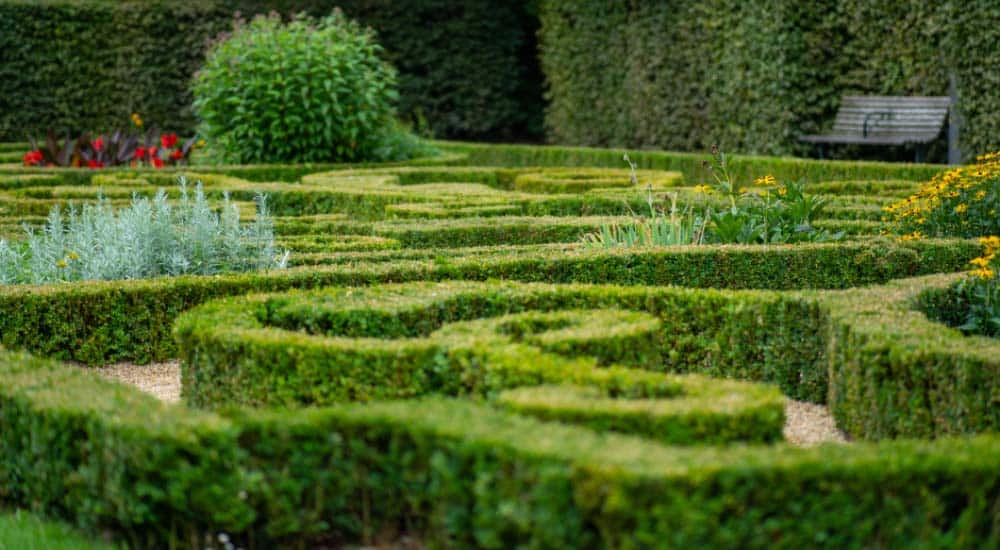The Versatile World of Low Hedging: Ideas for Every Gardener
Low hedging, an integral component of garden design, offers a unique blend of aesthetics, functionality, and versatility. Perfect for gardeners of all skill levels, low hedges provide a natural solution for defining spaces, enhancing privacy, and adding beauty to landscapes. This blog explores the multifaced world of low hedging, offering ideas and insights to inspire gardeners everywhere.
Understanding Low Hedging:
Low hedges, typically under one metre in height, are much more than just garden borders. They serve multiple purposes: Creating visual interest, delineating spaces, and even serving as windbreaks or noise barriers. The beauty of low hedging lies in its versatility – whether you have a sprawling large garden or a modest front garden, there’s a low hedge to suit your needs.
Choosing the Right Plants:
The key to successful low hedging starts with appropriate plants. Factors such as growth rate, foliage density, and adaptability to your local climate are crucial. Some popular choices include:
• Box (Buxus sempervirens): Known for its dense, evergreen foliage, boxwood is a classic choice for formal low hedging.
• Japanese Holly (Ilex Crenata): A great alternative to boxwood, it’s perfect for creating smooth, rounded hedges.
Designing with Low Hedges
Low hedging offers endless design possibilities, making them suitable for a range of different garden styles:
1. Formal Gardens: Use straight-lined low hedging to create geometric patterns or frame garden statues.
2. Cottage Gardens: Combine flowering plants like lavender with informal hedging for a relaxed, charming effect.
3. Contemporary Spaces: Opt for neatly trimmed hedges like boxwood to complement modern garden designs.
Maintenance Tips:
While low hedges are generally low-maintenance, some care is necessary to keep them looking their best:
• Pruning: Regular pruning not only maintains the desired shape but also encourages dense growth.
• Feeding and Watering: Providing the right nutrients and adequate water will ensure your hedges stay healthy and vibrant.
• Pest and Disease Management: Keep an eye out for common issues like box blight or spider mites and caterpillars and treat them promptly.
Incorporating Low Hedges for Functionality:
Apart from their decorative value, low hedges can be functional:
• Creating Borders: They are ideal for marking the boundaries of vegetable gardens or walkways.
• Wildlife Habitats: Planting native hedges can attract beneficial insects and birds, enhancing your garden’s biodiversity.
Sustainable Gardening with Low Hedges:
Incorporating sustainable practices into your hedging strategy not only benefits the environment but also improves your gardens health:
• Choosing Native Plants: They are better adapted to local conditions and require less care.
• Organic Practices: Use natural fertilisers and pest control methods to minimise environmental impact.
Advanced Techniques:
For the more adventurous gardener, low hedging can be an opportunity to experiment:
• Topiary Art: Skilful pruning hedges into artistic shapes can add a unique touch to your garden.
• Layered Planting: Combining different hedge heights can create a visually appealing and dynamic landscape.
Integrating Low Hedges in Small Spaces and Urban Gardens:
Low hedges are not just for expansive landscapes; they can play a significant role in smaller gardens and urban settings. In compact spaces, low hedges can be used to maximise the sense of space and create distinct areas without overwhelming the area. They are excellent for balcony gardens, patio borders, or green dividers in communal urban spaces. By choosing dwarf varieties or slow-growing plants, urban gardeners can enjoy the elegance of hedges without the need for frequent trimming or maintenance.
The world of low hedging is rich and varied, offering something for every gardener. Whether you’re a seasoned pro or just embarking on your garden journey, low hedging can enhance your garden in a number of ways. From creating defined spaces to attracting wildlife, these versatile plants are a fantastic addition to any garden.
By embracing the ideas shared within this blog, you’re well on your way to discovering the full potential of low hedging in your garden. Remember, gardening is a journey of learning and growth, and low hedging is a wonderful chapter in that adventure.
For more hedging insights and expert advice, please feel free to get in touch with us here at Readyhedge. Our team is dedicated to helping you achieve your gardening/landscaping goals.



